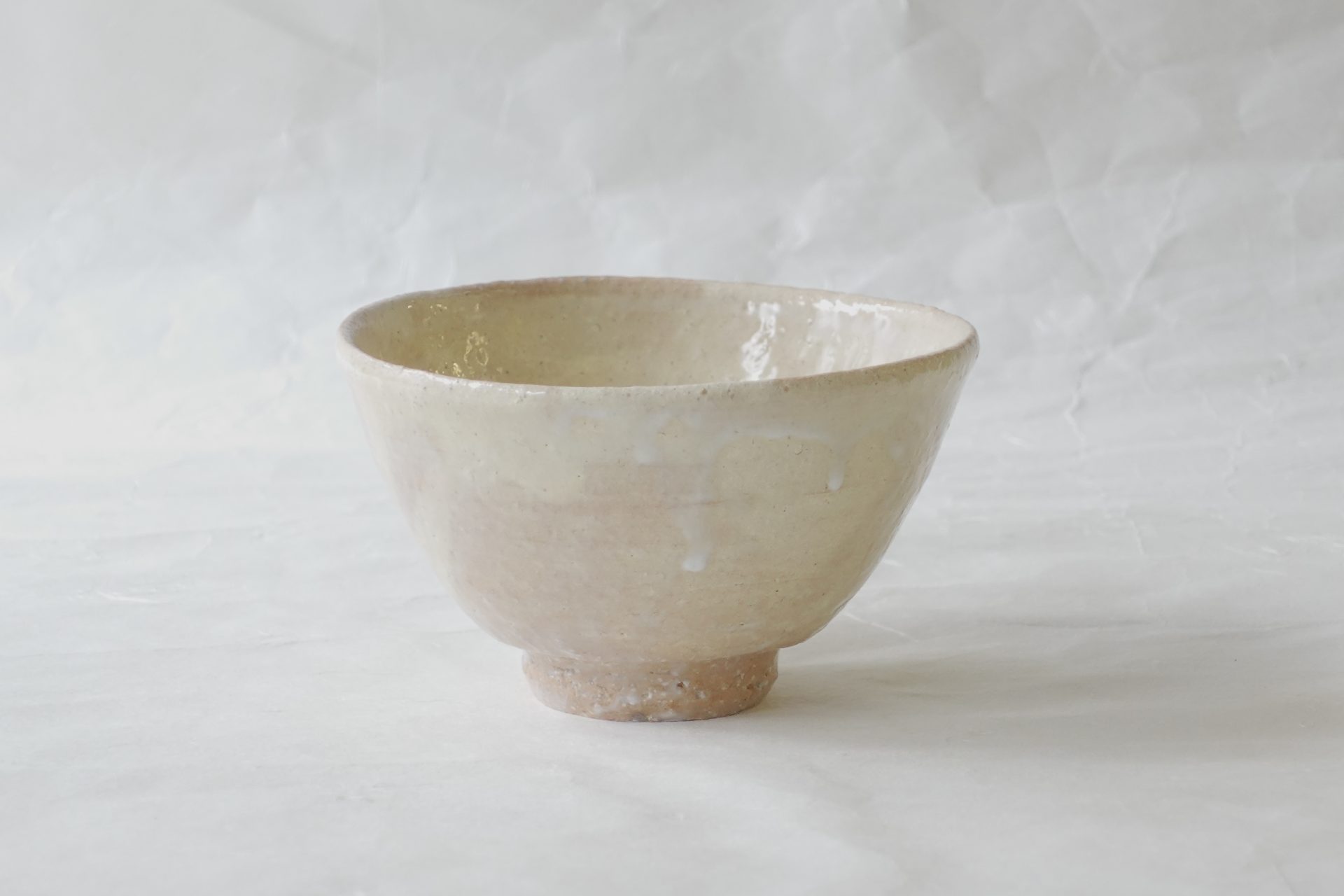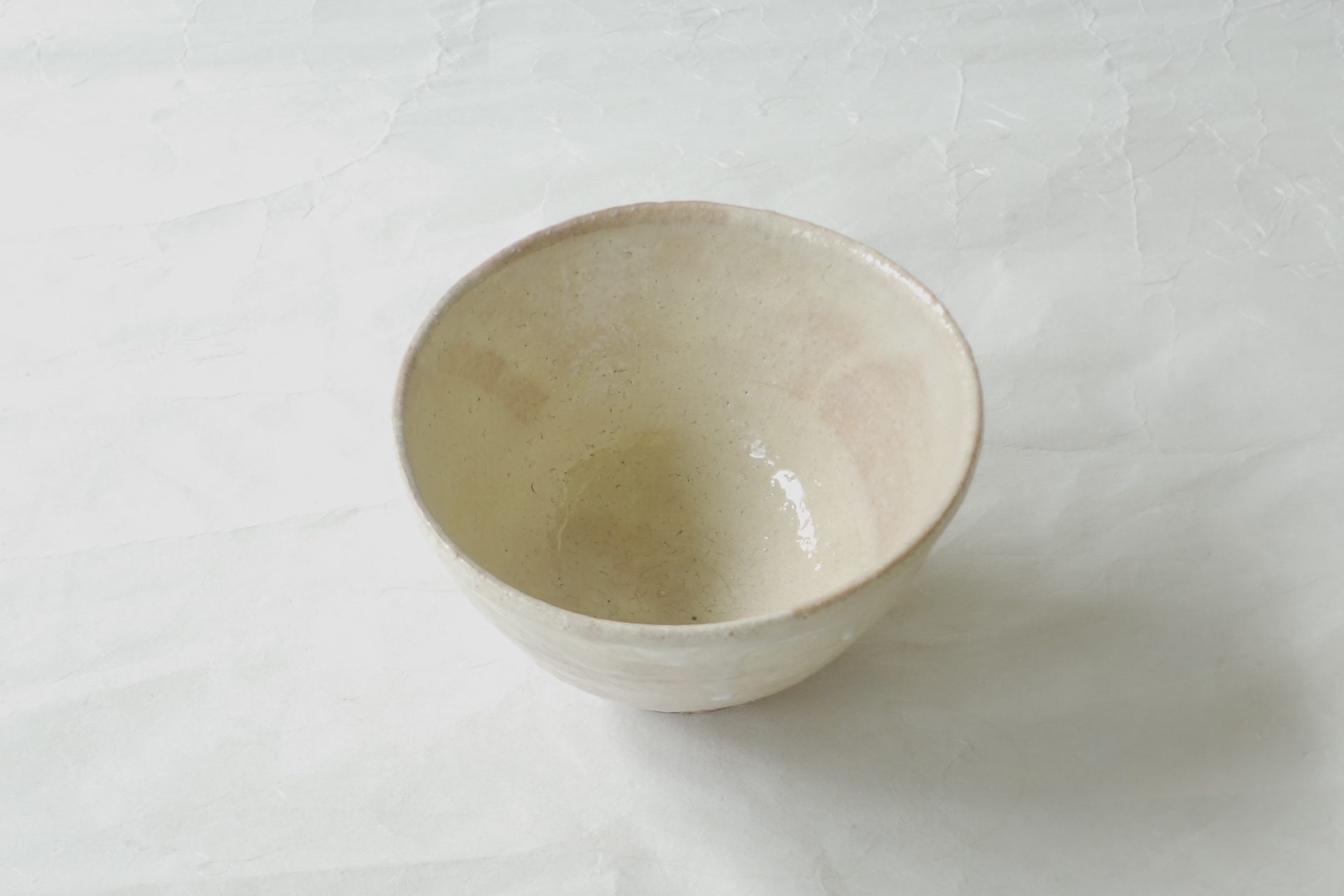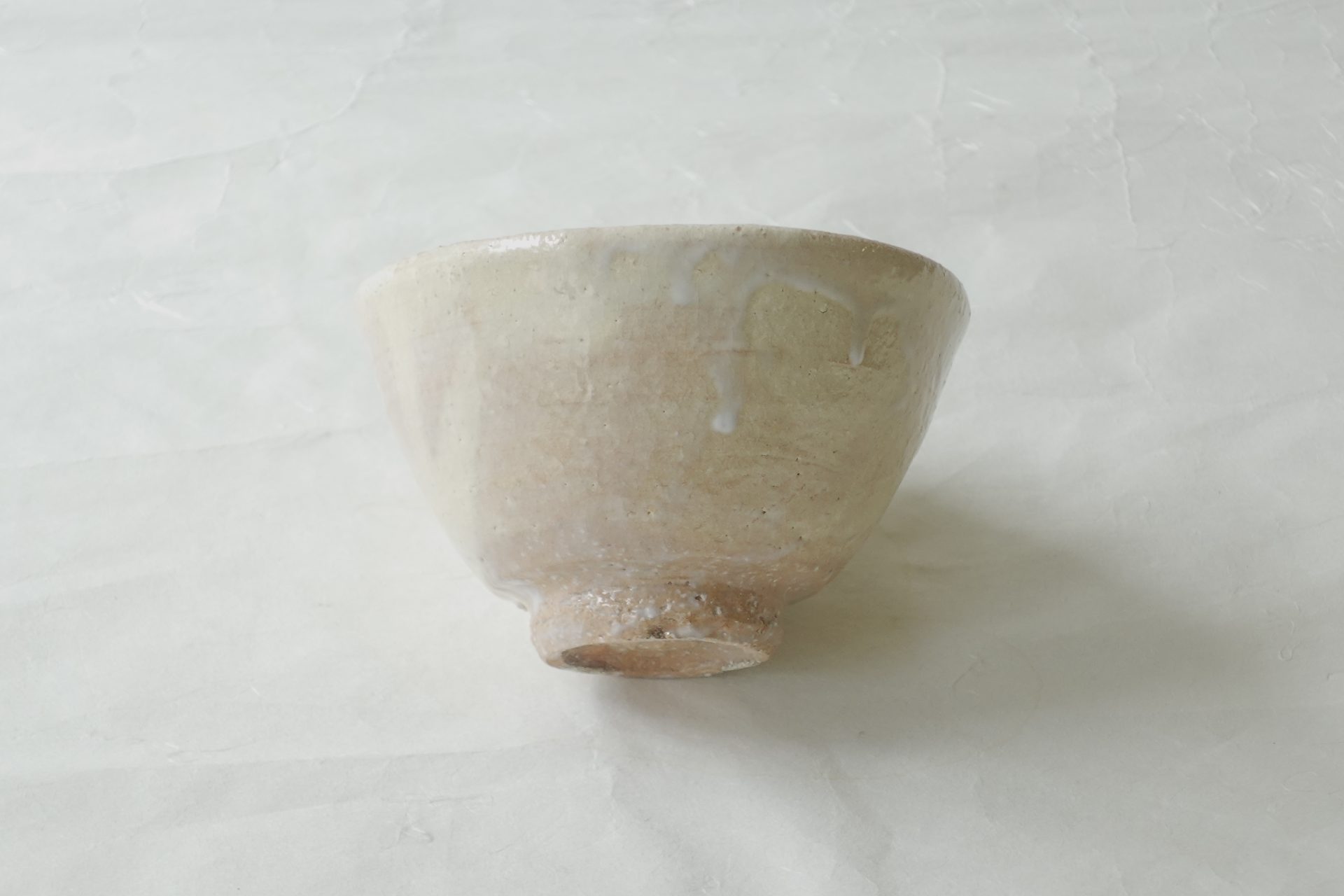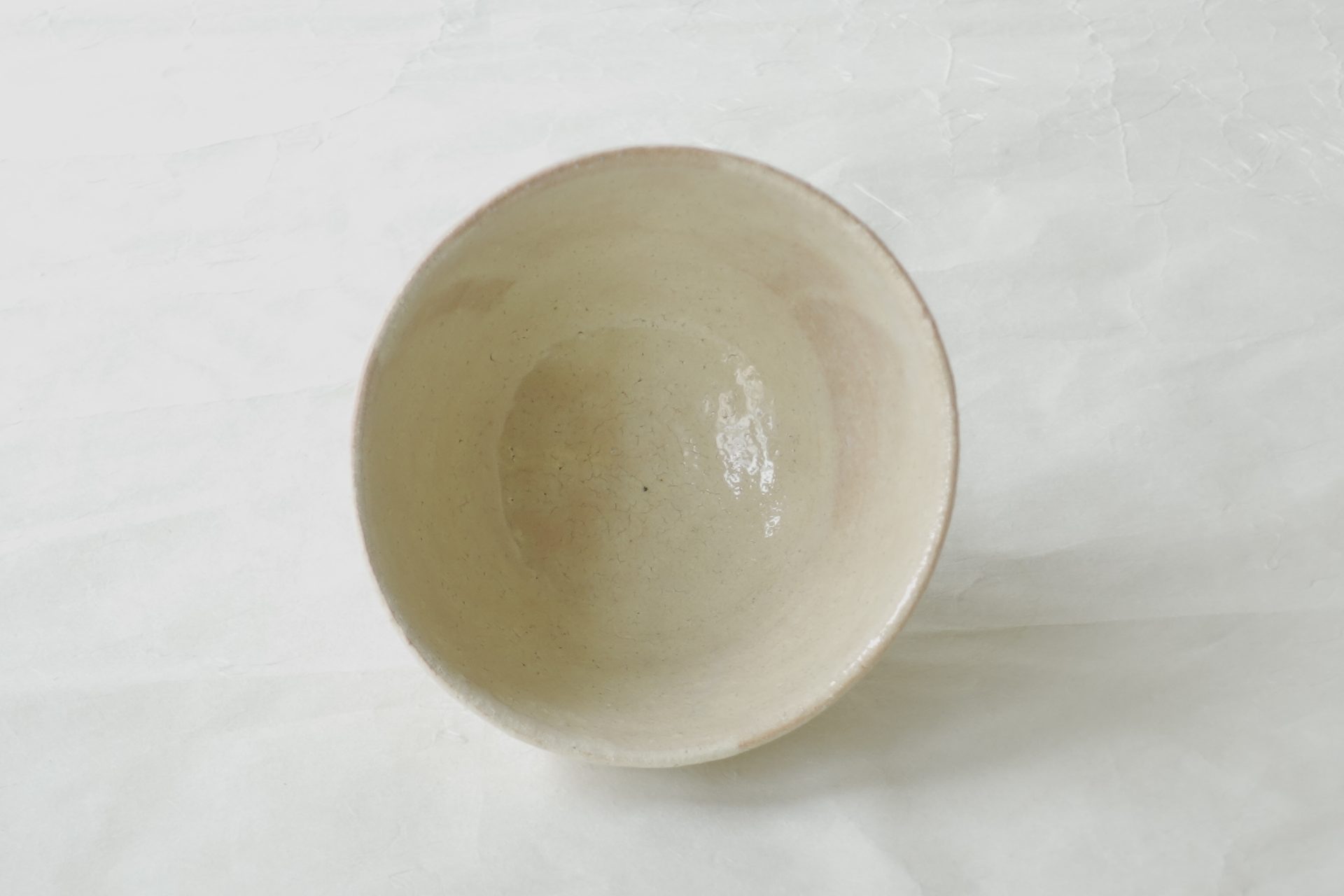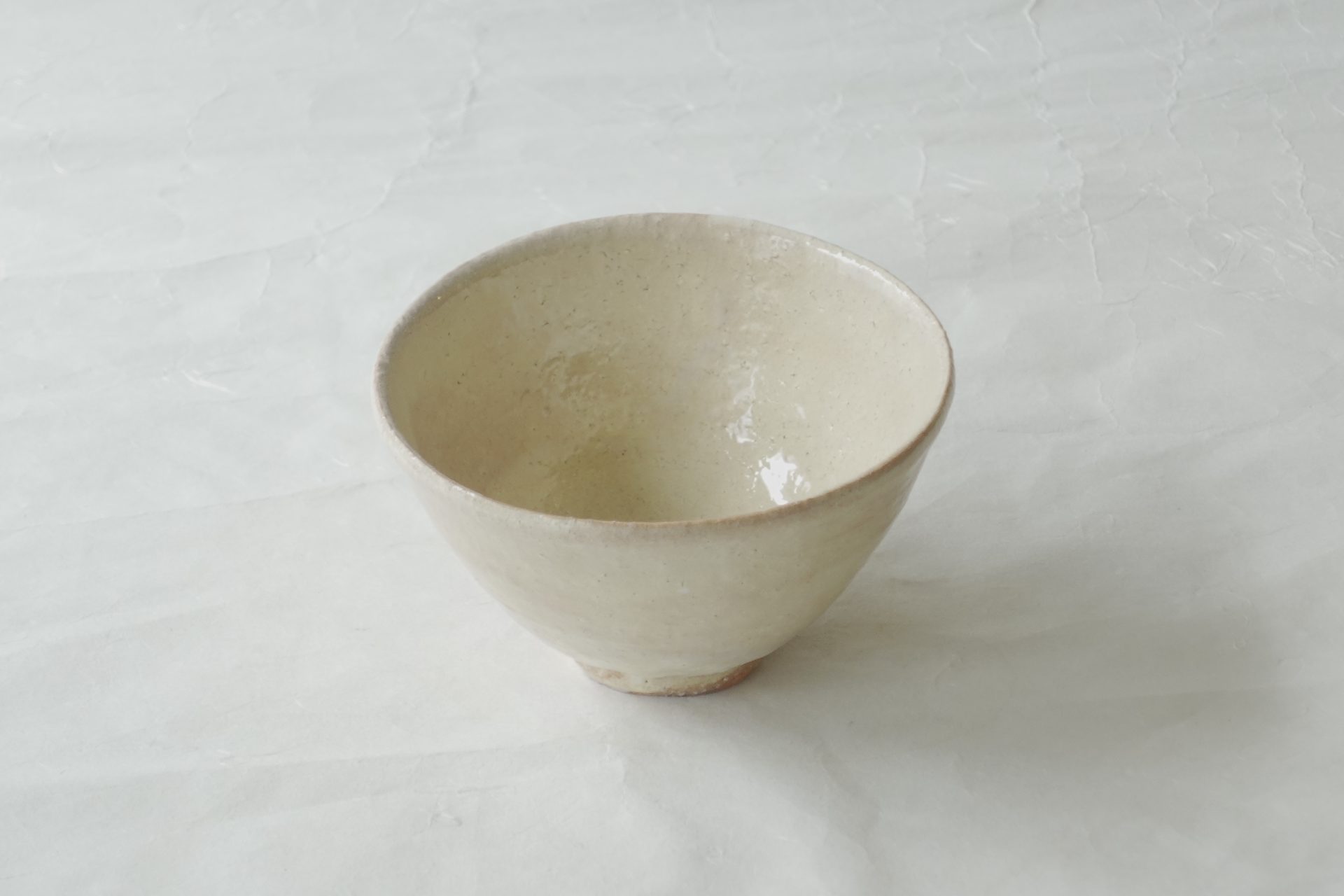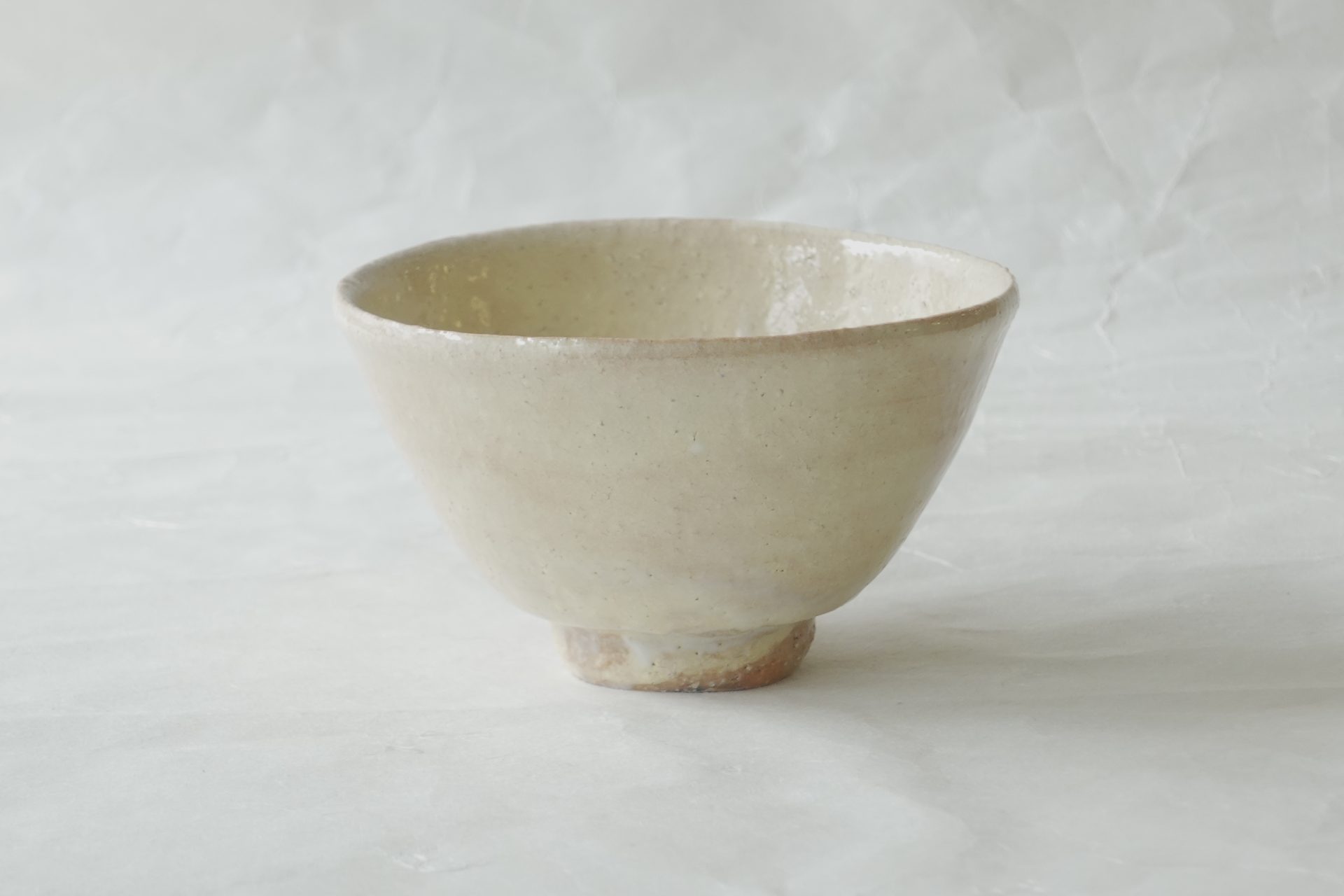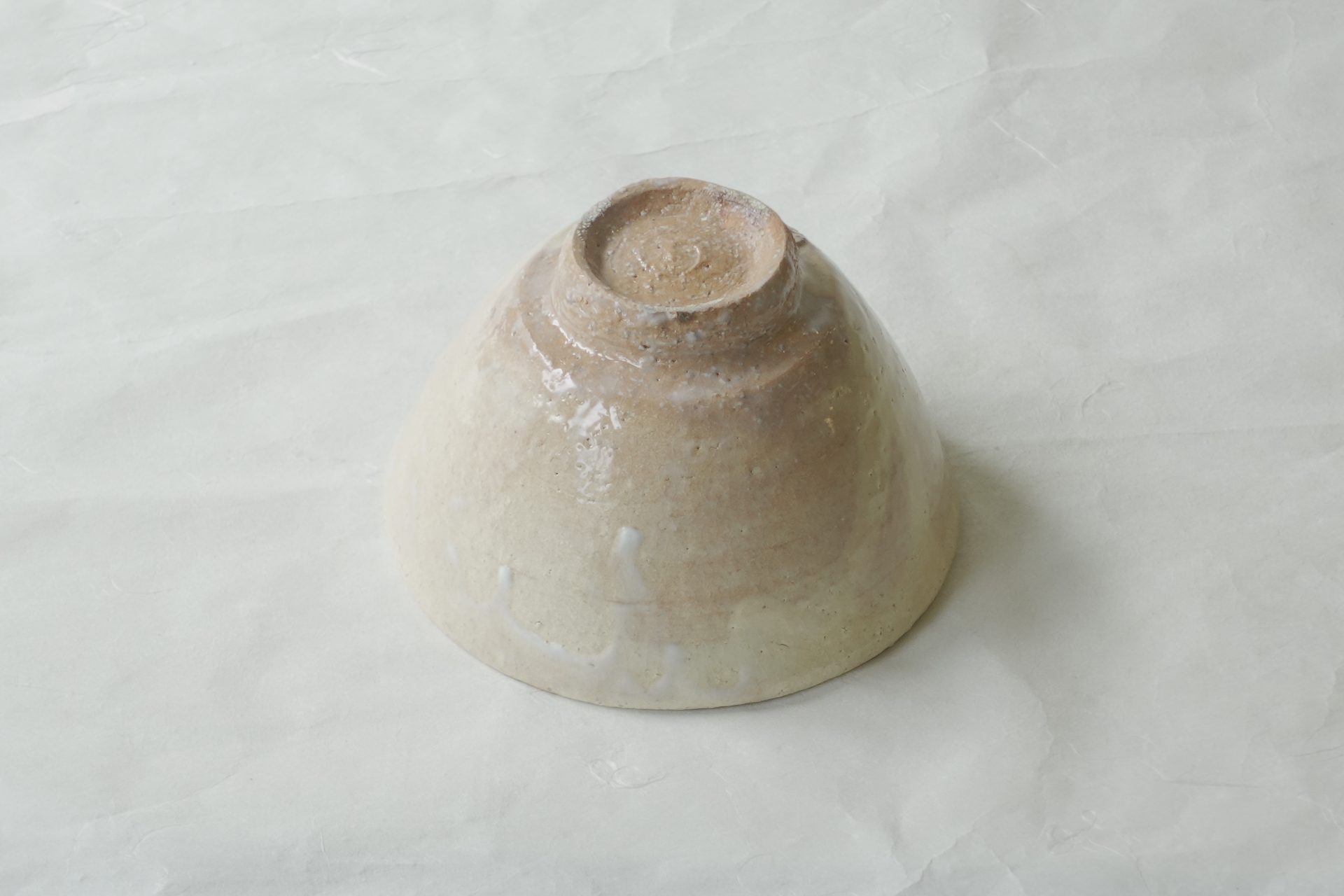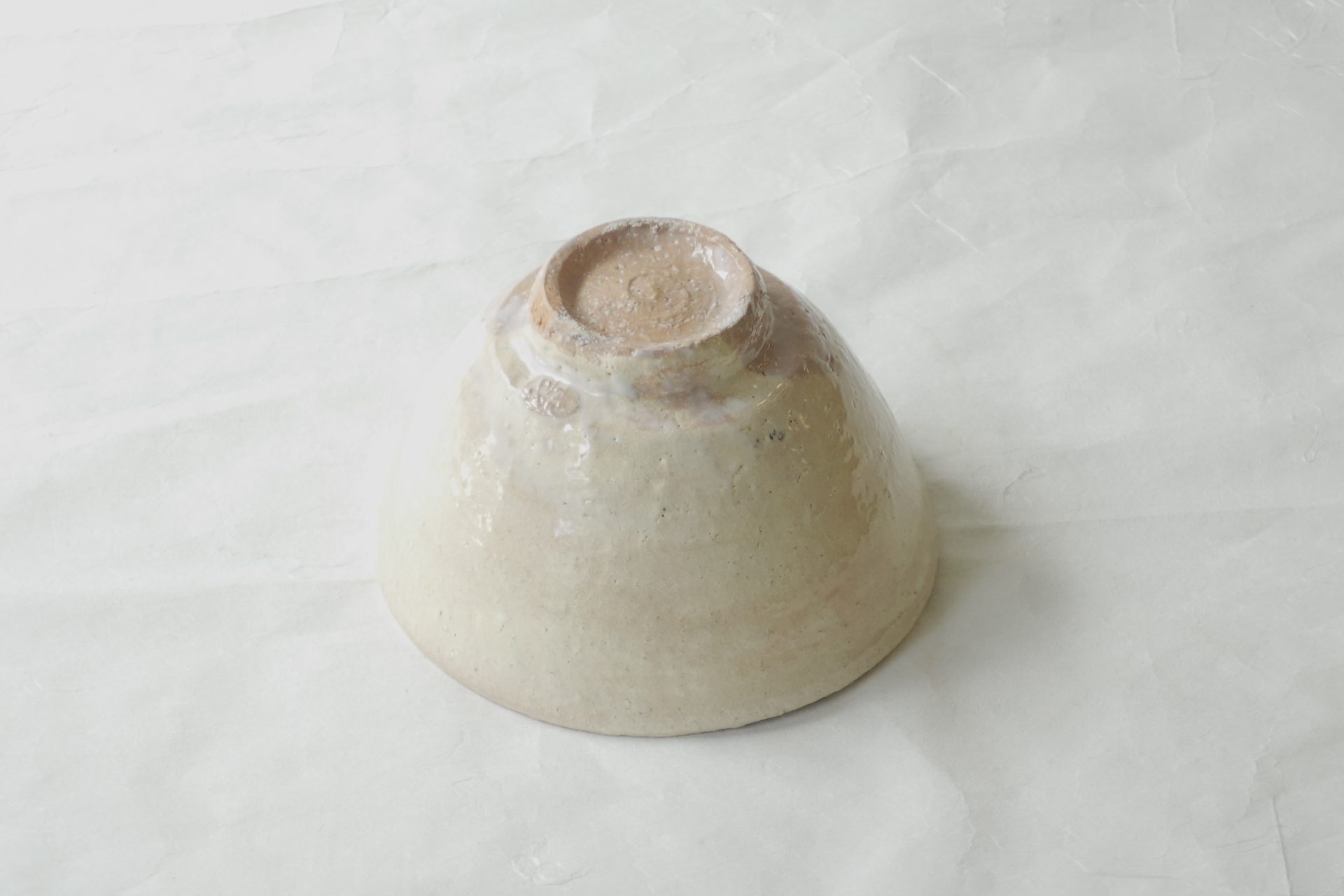口径 13.5cm 高さ 8cm
Hagi Ware Koyo Kiln Biwa Glaze Ido-Style Matcha Bowl
Here we present an ido-style tea bowl by Hayashi Koyo, crafted in Hagi ware.
The ido tea bowl originally refers to a type of Korean tea bowl believed to have been made relatively early in the Joseon dynasty. Among the Korean tea bowls imported to Japan after the Muromachi period, the ido style was regarded as the finest, earning the reputation of being the “king” of imported tea bowls.
The characteristics of an ido tea bowl include the use of coarse clay rich in iron, which gives it a reddish-brown hue.
Because this coarse clay is shaped quickly on the potter’s wheel, the surface often shows pronounced ribbed wheel marks.
The foot is known as a take-no-fushi-kodai (“bamboo node foot”), said to have originated as a practical feature to make the bowl easier to grip during glazing.
This is a carved foot, where the trimming tool enters at an angle, creating a distinctive raised swirl in the center of the foot ring.
The bowl is fully glazed (sougusuri), even inside the foot, leaving very little of the bare clay exposed — one of the defining conventions of an ido tea bowl.
The overall finish is a soft, gentle loquat (biwa) color, giving it a warm, subtle character.
White glaze accents are applied here and there, and variations in the way the glaze drips and flows add to its visual appeal.
The surface glaze has a soft luster, exuding an inviting, gentle atmosphere.
Fine crackle patterns (kan’nyuu) and pinholes can be seen throughout, showcasing the characteristic charm of Hagi ware.
The bowl feels solid and substantial, conveying a sense of luxury.
Slightly smaller than a typical ō-ido bowl, it is sized to be suitable even for usucha (thin tea).
It has a deep, rich flavor unique to Hagi ware, yet with a bright and uplifting impression.
This is a fine piece you can use and treasure for years, enjoying the famous “seven changes of Hagi” as it matures with use.
Diameter: 13.5 cm
Height: 8 cm
萩烧 红阳作 枇杷釉 井户 抹茶碗
为您介绍一件由萩烧艺人林红阳制作的井户茶碗。
井户茶碗原本是朝鲜茶碗的一种,被认为是李朝时期较早制作的茶碗。它在室町时代以后传入日本的众多朝鲜茶碗中,被推崇为第一等的茶碗,被誉为唐物茶碗之王。
井户茶碗的特点是,胎土为含铁量高、质地粗糙的土,呈赤褐色。由于用快速拉坯的方式成型,表面常常能明显看到肋骨状的拉坯纹。
高台被称作“竹节高台”,据说是为了便于在施釉时握持茶碗而形成的这种独特造型。
这是通过削制出的高台,由于修整高台内的刀具是斜向伸入的,因此高台内中央呈现出漩涡状隆起,这也是一大特色。
施釉时采用了“全釉挂”工艺,釉料一直覆盖到高台内侧,因此几乎看不到胎土裸露的部分。这也是井户茶碗的一项约定俗成的做法。
整体呈现出枇杷色,风格柔和。茶碗局部施以白釉,釉流的垂挂和流动的变化亦为一大看点。
表面釉层具有光泽,散发出温润的氛围。
全身可见细腻的贯入纹和针孔等,充分展现出萩烧的特色。
整体厚重沉稳,给人高雅之感。
比起大井户茶碗略小一些,因此也适合作为薄茶碗使用。
既保有萩烧那种浓厚、深沉的味道,又不失明快的印象。
可以随着使用的岁月欣赏“萩之七变”,是一件值得长期使用的上乘佳品。
口径:13.5 cm 高度:8 cm
